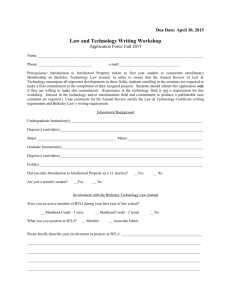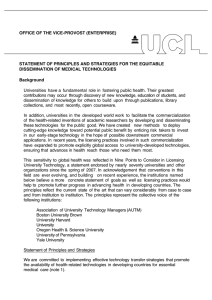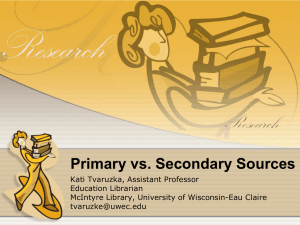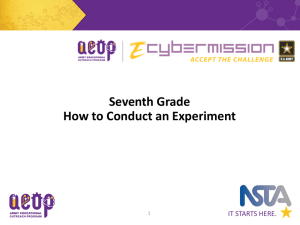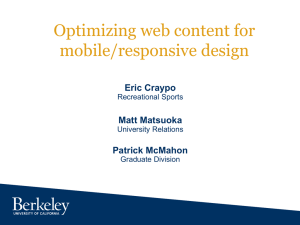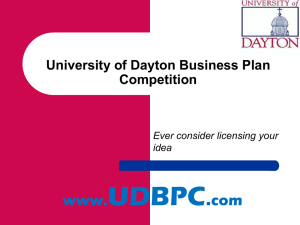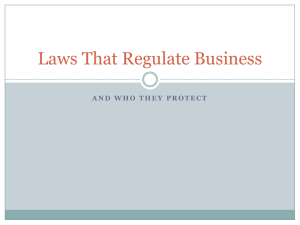Intellectual Property for Scientists, UC Berkeley, 2007
advertisement
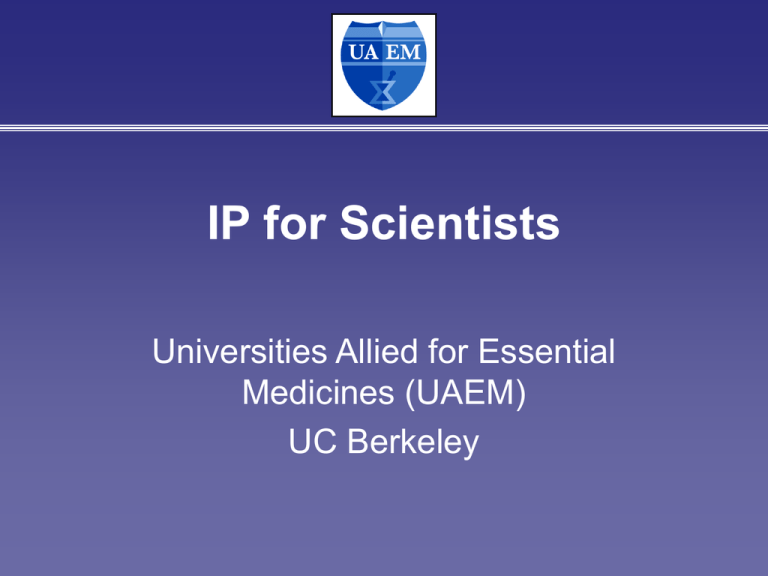
IP for Scientists Universities Allied for Essential Medicines (UAEM) UC Berkeley Agenda • Patent law fundamentals • Patenting @ Berkeley • Office of Intellectual Property & Industry Research Alliances (IPIRA) • University patenting and global health • Who we are – UAEM What is Intellectual Property? • Intellectual Property (IP): person’s right to have control over the things s/he creates. • Examples of types of IP Patent Copyright Trademark The Balance of IP Law IP is an attempt to balance between providing financial incentive for innovation and allowing for access to technologies Access Ownership • Allow the public to use and benefit from the invention • Promote research and protect investments • Create competition Patent Law – Give and Take What you give • A written description of your invention • Enablement: disclose how to make and use your invention • Best mode: disclose the best mode of patenting your invention What you get • An exclusive right to exclude others from making, selling, or using your invention for a limited period of time • The power to assign or license your rights to someone else What do universities do with patents? Research Decision to Patent License to Industry • Licensing: letting a third party use the patented technology under certain conditions Licensee – Exclusive license Licensor – Non-exclusive license Patenting @ Berkeley • Office of Intellectual Property & Industry Research Alliances (IPIRA) • Assistant Vice Chancellor Carol Mimura, Ph.D. • [Picture of building] Office of Intellectual Property & Industry Research Alliances (IPIRA) (Assistant Vice Chancellor Carol Mimura ) Office of Technology Licensing (OTL) Industry Alliances Office (IAO) • One stop shop for industry-university relations, including sponsored research and intellectual property. Contact IPIRA for… • Disclose an invention • Material transfer • Sponsored research agreement http://otl.berkeley.edu University Licensing & Global Health: Why Should We Care? • Gaps in Drug Development Pipeline – Lack of research – Lack of production • Poor access – High, unaffordable prices – Lack of adaptive formulations for drugs • Why? Business profit-based incentives • Result: Lack of access to life-saving drugs What can universities do? • Universities are major players in the drug development field – 40-50% of pharmaceutical industry’s new products rely on academic research. What can Berkeley do? • Berkeley - a history of public service – "The distinctive mission of the University is to serve society as a center of higher learning, providing longterm societal benefits through transmitting advanced knowledge, discovering new knowledge, and functioning as an active working repository of organized knowledge.” • Socially responsible licensing Socially Responsible Licensing • Maximize the social benefit of discoveries made at Berkeley through equitable licensing • Example policies – Royalty-free license terms for products sold in developing world – Requirement that licensees provide low-cost therapies for free or for minimal profit in developing world – Private-public partnerships (Peg Skorpinski photo) Universities Allied for Essential Medicines • International student organization • Two-fold Mission – Ensuring access to life-saving medicines – Promoting research on neglected diseases • www.essentialmedicine.org • http://uaem.berkeley.edu
